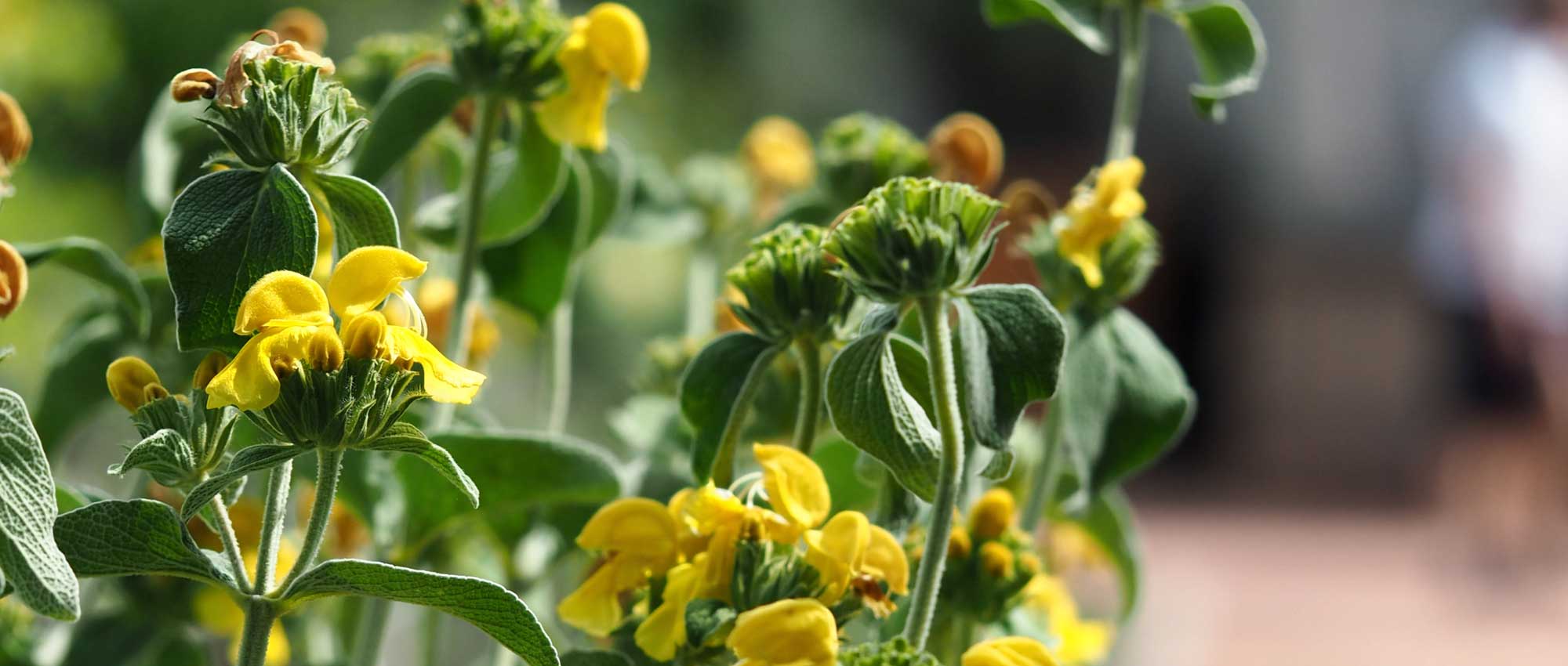
Phlomis, Jerusalem sage: planting, cultivation and care
Contents
Phlomis in a nutshell
- Phlomis produce whorls of yellow, pink, mauve or white flowers in summer!
- Their flowering brings plenty of light to borders in summer
- Flowers are melliferous
- Their foliage, often grey, is decorative and generally evergreen.
- Phlomis is a vigorous, reliable plant that requires no maintenance!
- A sun-loving plant, ideal in dry and Mediterranean gardens
A word from our expert
Phlomis, or Jerusalem sages, are perennial plants or shrubs, drought-tolerant and producing bright flowers in summer. They form fairly broad bushy clumps with leaves often downy or pubescent. They have attractive foliage, generally evergreen. The best-known are those with bright yellow flowers, such as Phlomis fruticosa or Phlomis russeliana, but there are also varieties with pink, mauve and even white flowers! Flowers are gathered in whorls, forming regular nival zones on upright stems, giving them a superb graphic appearance!
Phlomis tolerates both poor soils and drought. It is the perfect plant for a garden without water and without maintenance… A plant of the moment, for an ecological and economical garden! It is a true “camel plant”, an excellent solution for greening difficult or overly arid ground, and areas of the garden where you do not want to intervene too often (such as spaces that are difficult to maintain or to water regularly). Moreover, despite its preference for warm, sunny spots, Phlomis is a rather hardy plant.
Description and botany
Botanical data
- Latin name Phlomis sp.
- Family Lamiaceae
- Common name Phlomis, Jerusalem sage
- Flowering depending on variety, between May and August
- Height between 60 cm and 1.50 m
- Exposure full sun
- Soil type tolerates all types of soil, even poor and stony, but well-drained!
- Hardiness between -10 and -15 °C
Phlomis comprise around 110 species of perennial plants, herbaceous or bushy, whose native range extends from the Mediterranean region to Asia. The species most widely cultivated in gardens is Phlomis fruticosa. In the wild this species is mainly found to the east of the Mediterranean basin (Asia Minor, Turkey, Greece, Cyprus, Syria…), which explains its preference for rather warm, dry and sunny sites. Phlomis grow mainly in rocky habitats and dry short grass meadows. In France three species can be found in the wild: Phlomis herba-venti, Phlomis lychnitis and Phlomis fruticosa, the latter having naturalised in some places.
Phlomis belongs to family Lamiaceae, which includes many aromatic plants fairly resistant to drought, notably many Mediterranean species. Common characteristics are found in leaves (simple, opposite), stems (four-angled), flowers (two-lipped), fruit, and in adaptations to drought. Examples include sage, lavender, thyme and mint… and ornamental plants such as monardas, nepeta and caryopteris.
Etymologically the name comes from the Greek Phlox: flame, because leaves were once used as wicks for oil lamps. Another possible origin is the Greek Phlomos, referring to mulleins, alluding to the wooly foliage of some plants that resembles Phlomis. The species name fruticosa means bushy, from the Latin frutex: bush. In French Phlomis is called Sauge de Jérusalem (Jerusalem sage), because its foliage resembles that of sage… and indeed Phlomis and sage are close relatives.
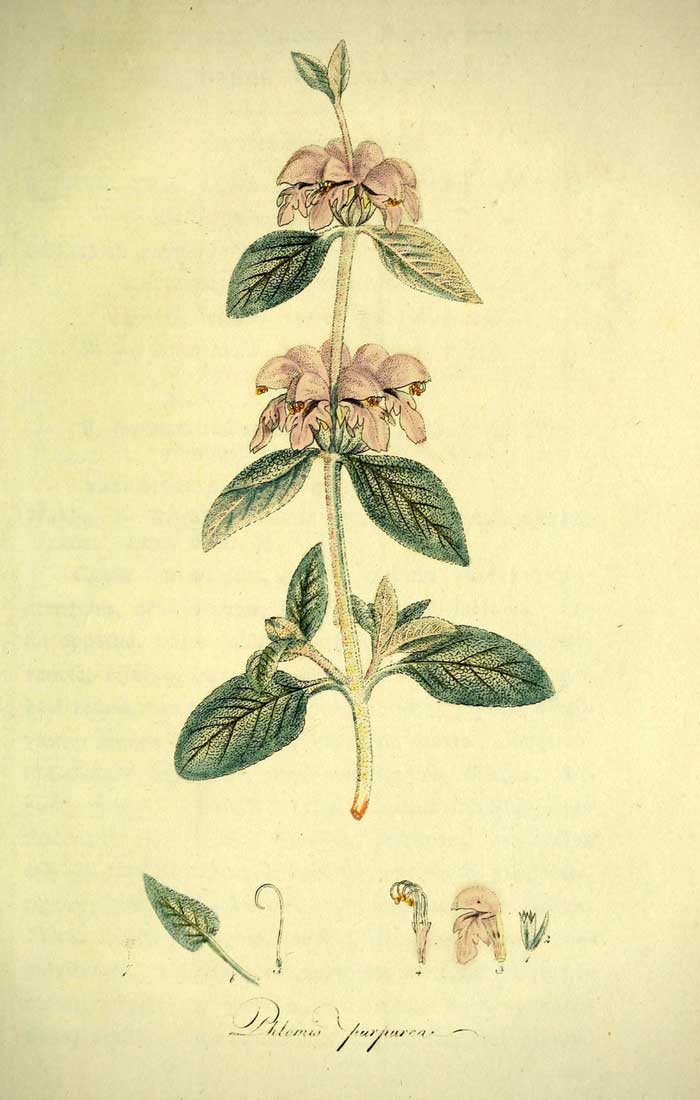
Phlomis purpurea: botanical illustration
Phlomis can be herbaceous or bushy. They form wide clumps with dense foliage, which helps to limit weed growth. Width is often almost equal to height. Phlomis reach between 60 cm and 1.50 m in height. Phlomis italica is among the lowest, often under 60 cm. Phlomis stems are notable for being square, four-angled. They are long, straight and erect. Phlomis tuberosa bears striking stems in purplish to deep red tones, which set off foliage and flowers to great effect.
Flowering occurs in summer, often around June and July; depending on variety it can extend from May to August–September.
Stems are marked by whorls of flowers, arranged regularly in tiers. Each whorl is made up of flowers all at the same level, surrounding the stem fairly densely. This tiered flowering creates a superb visual effect and gives a very graphic quality to the blooms of Phlomis tuberosa ‘Amazone’. Each whorl sits above two opposite leaves (bracts), adding further graphic interest to the inflorescence. With long, upright flower spikes, Phlomis flowers are well suited to cut-flower arrangements.
Phlomis flowers are often 2–3 cm long. Petals are fused into a tube but open into two lips. The upper lip forms a galea, while the lower lip is divided into three lobes. This corolla is inserted in a five-toothed calyx. The flower also bears four stamens (two long and two short).
Phlomis flowering is appreciated by pollinating insects, in particular bumblebees and carpenter bees.

Phlomis flowering! In order: Phlomis fruticosa (photo Stan Shebs), Phlomis tuberosa (photo C.T. Johansson) and Phlomis russeliana
Phlomis has rather dense, thick foliage. Leaves are simple (not divided), ovate and fairly elongated. They are rugose and generally hairy, pubescent. On stems leaves are arranged in opposite pairs; each pair is at right angles to the previous one (decussate opposite leaves). Leaves of Phlomis fruticosa resemble those of sage, which explains the common name Jerusalem sage. In Phlomis russeliana the leaves are triangular or cordate, fairly broad at the base and narrowing towards the tip. Phlomis leaves generally measure between 5 and 20 cm in length. By contrast Phlomis lanata is distinguished by small, relatively rounded leaves, no more than 3 cm long.
Leaves are often a lovely pale green but frequently take greyish hues, sometimes slightly bluish. The underside is usually a little greyer and wooly.
In most varieties the leaves are evergreen, so Phlomis remains decorative in winter. However Phlomis tuberosa has deciduous leaves.
Grey, pubescent leaves are an adaptation to drought, reducing evapotranspiration and helping the plant conserve water in its cells.

Foliage of Phlomis fruticosa, Phlomis lanata and Phlomis russeliana
Fruit of Phlomis is made up of four achenes (tetrakene), one of the characteristics of family Lamiaceae. The achenes are contained in the calyx, which persists after flowering. When flower spikes have faded and bear fruit they remain decorative and highly graphic! You can leave them in place over winter, as they add structure to borders and an original, attractive element at that time of year.

Infructescences of Phlomis fruticosa, those of Phlomis russeliana (photo Dominicus Johannes Bergsma), and seeds of Phlomis tuberosa (photo Stefan Lefnaer)
Phlomis is therefore decorative in the garden for much of the year, thanks to summer flowering, fruits in autumn and winter, and evergreen grey‑green foliage reminiscent of sage.
Main varieties of Phlomis
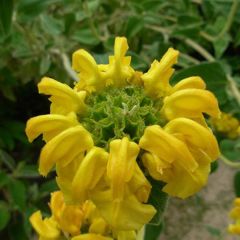
Phlomis fruticosa - Jerusalem Sage
- Flowering time June to August
- Height at maturity 1,25 m
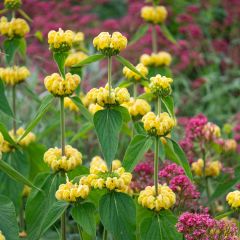
Phlomis russeliana - Jerusalem Sage
- Flowering time July, August
- Height at maturity 80 cm
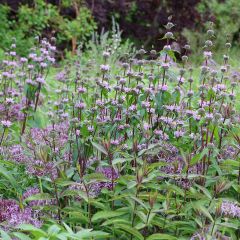
Phlomis tuberosa Amazone
- Flowering time June to August
- Height at maturity 1,20 m
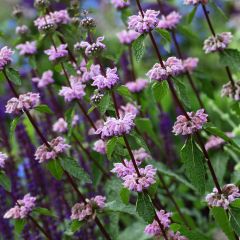
Phlomis cashmeriana
- Flowering time June to August
- Height at maturity 70 cm
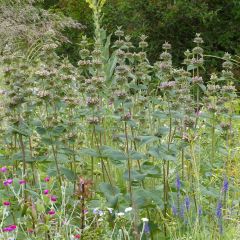
Phlomis samia
- Flowering time August, September
- Height at maturity 1 m
Discover other Phlomis - Hardy Jerusalem sage
View all →Available in 2 sizes
Available in 1 sizes
Available in 2 sizes
Available in 0 sizes
Available in 0 sizes
Available in 1 sizes
Available in 1 sizes
Available in 1 sizes
Planting Phlomis
Where to plant?
Phlomis is a full-sun plant.It is ideal in Mediterranean gardens and sunny rock gardens, and suits coastal gardens very well. Don’t hesitate to place it at the base of a south-facing wall! However, generally it can tolerate a slightly shaded position provided there is enough light.
Phlomis is not very sensitive to soil type. It tolerates poor soil, even stony, and copes with calcareous ground. Most important is that soil is well drained, as this plant dislikes excess moisture! If soil holds water, plant on a mound. Raising the bed will allow water to drain away more quickly. You can also add gravel to improve water infiltration. Ideally, plant in a sandy, light, poor substrate.
As Phlomis has a fairly wide, spreading habit, leave some space around it, avoiding planting it too close to other plants.
Phlomis can easily be placed in a rock garden.It also suits perennial beds, borders, or naturalistic plantings (notably varieties such as Phlomis tuberosa ‘Amazone’!). As Phlomis has a fairly wide, spreading habit, leave some space around it, avoiding planting it too close to other plants.
When to plant?
You can plant Phlomis in autumn or spring.Plant in autumn if you are in a mild climate, and in spring if you are in a harsher climate.
How to plant?
As Phlomis forms fairly large clumps, respect a good planting distance (70 to 80 cm minimum).
For planting a Phlomis :
- Place plant in a basin filled with water to thoroughly moisten the rootball.
- Meanwhile, prepare ground. Dig a planting hole, add some gravel if needed to help water infiltration into the soil. You can also create a mound to install the plant in a raised position and avoid water stagnation later.
- Take plant out of its pot and place it in the planting hole.
- Replace soil all around.
- Firm soil lightly with the flat of the hand.
- Water thoroughly.
Continue watering in the weeks following planting. Phlomis will then manage without further watering.

Phlomis herba-venti (photo Luis Nunes Alberto)
Care
Phlomis has the advantage of hardly needing any maintenance! You can let it thrive in a spot in the garden without much intervention. It tolerates drought and hot weather well, and can therefore manage without watering. Likewise, as it prefers fairly poor soils, it does not need fertiliser.
It is possible to prune the flower spikes in autumn once they have faded, but we suggest leaving them for winter, as they have decorative, architectural appeal. You can then cut them at the end of winter (March–April), and take the opportunity to remove leaves damaged by frost. You can also carry out a light prune after flowering to maintain a more compact, dense habit. For Phlomis tuberosa, as it is a deciduous plant, we recommend cleaning the clump at the end of winter, removing stems and leaves that have dried out.
Although not prone to disease, phlomis is sometimes attacked by leafhoppers, small insects that pierce plant tissues to feed on sap. Leaves then show small discoloured spots. This can also lead to the development of sooty mould, but generally damage is not very severe. You can treat with neem oil or black soap.
Propagation: sowing, propagation by cuttings, division
Phlomis can be multiplied by sowing, propagation by cuttings or division. We recommend propagation by cuttings.
Sowing
You can harvest Phlomis seeds from fruits on faded flower spikes in autumn, then sow at start of spring.
- Take a pot and fill it with seed compost. Press down lightly.
- Sow seeds on surface.
- Cover with a little compost.
- Water with a fine spray.
- Place pot at temperature between 15 and 18 °C.
- Continue watering regularly so substrate remains moist until germination.
- Be patient… Seeds may germinate after two weeks, but sometimes take much longer to appear: up to two months!
- You can then prick out young shoots into individual pots, then plant into soil in autumn or following spring.
Propagation by cuttings
You can propagate Phlomis by cuttings in late summer (July–August).
- Take a section from a stem preferably non-flowering and healthy. It should measure between 10 and 15 cm. Cut cleanly with a disinfected knife, just below a node. If there are flowers or flower buds, remove them.
- Remove leaves from lower half of stem, leaving only a few at tip.
- Prepare a pot with a mix of compost and sand, and water so mix is thoroughly moist.
- Plant the cutting into the growing medium.
- Firm soil well around stem to remove air pockets and ensure good contact between stem and substrate.
- Place cutting under a cold frame, protected from frost. Location should be bright but out of direct sunlight.
It is best to place a plastic bottle or plastic bag over the pot to maintain a humid atmosphere (propagation by cuttings under cover). Remember to ventilate occasionally to prevent disease or fungal growth.
Dividing clumps
Dividing clumps can be done in autumn or spring. This will help regenerate plants and make them more vigorous. You can do this every three years. Carefully lift a well-established, sizeable clump that has been in place for several years. Divide into several sections, then replant at new locations after preparing soil.
→ Find out more in our tutorial How to propagate Phlomis or Jerusalem sage?
Companion planting Phlomis
Phlomis is ideal in Mediterranean and dry gardens. Plant it with Euphorbia characias, Stachys byzantina, Verbascum, Cistus… Discover delicate blue–mauve flowers of Catananche caerulea. Also favour aromatic plants such as lavenders, sages, hellechrises and santolinas. You will end up with a garden that needs almost no maintenance! This type of bed is particularly suited to seaside gardens.
Being drought-tolerant and liking poor, well-drained, stony soil, Phlomis can easily be used at back of a rockery. Place it in front of some lower, cushion- or mat-forming plants such as saxifrages, moss phlox, sedums or Corsican spurge (Euphorbia myrsinites). Add a few Eryngiums, helianthemums, Armeria maritima and sand pinks (Dianthus arenarius). Also enjoy distinctive flowering of Echinops! For a rockery, we recommend choosing the more compact Phlomis rather than the larger varieties. Phlomis lanata seems particularly well suited.
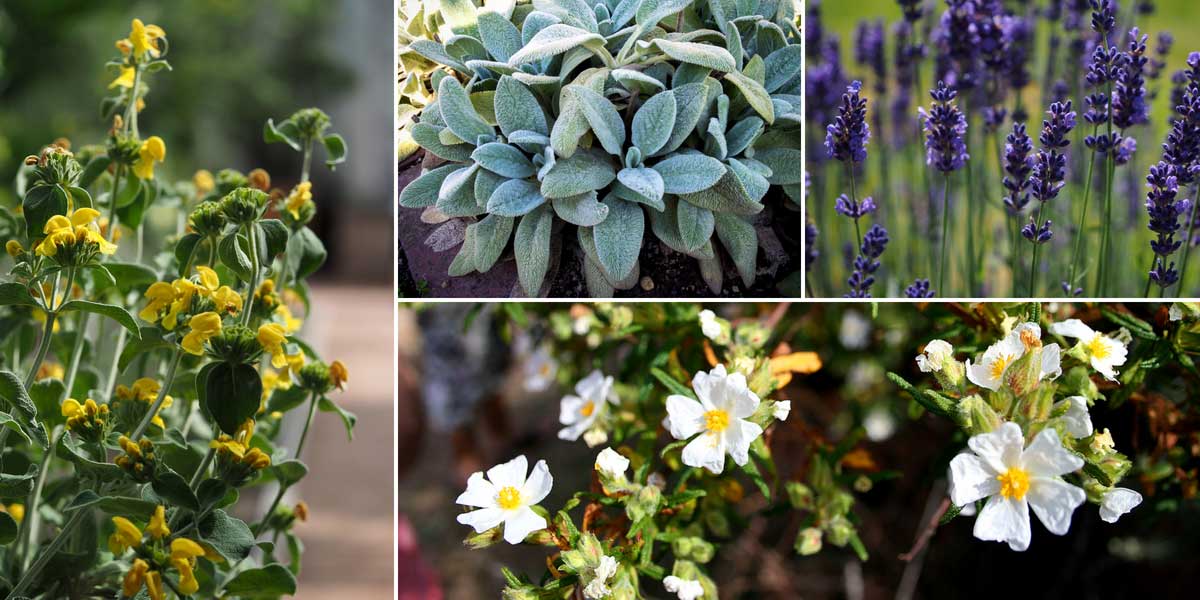
Phlomis can be integrated into Mediterranean-style or dry gardens. Phlomis fruticosa, Stachys byzantina (photo Plenuska), lavender and Cistus monspeliensis (photo Jean-Pol Grandmont)
For a more traditional but nonetheless colourful and lively border, you can include Phlomis in a mixed border. Plant it with hardy geraniums, Centranthus ruber, lady’s mantle, sages and nepeta. It can be placed at edge of a path to bring a lively, bright touch along a passage or walkway.
With its long, upright, very airy and delicate stems, Phlomis tuberosa ‘Amazone’ will fit well in a naturalistic garden. Plant it with tall ornamental grasses (Calamagrostis, Stipa gigantea…), which will catch the sun’s rays attractively. Add Echinacea purpurea, Cirsium japonicum, and teasels (Dipsacus). Admire long flower spikes of Veronicastrum! As Phlomis tuberosa ‘Amazone’ has a rather graphic appearance, it can also be used to provide contrast in a more modern garden alongside lower, compact plants.
→ Discover more ideas for pairing Jerusalem sage or Phlomis in our advice sheet!
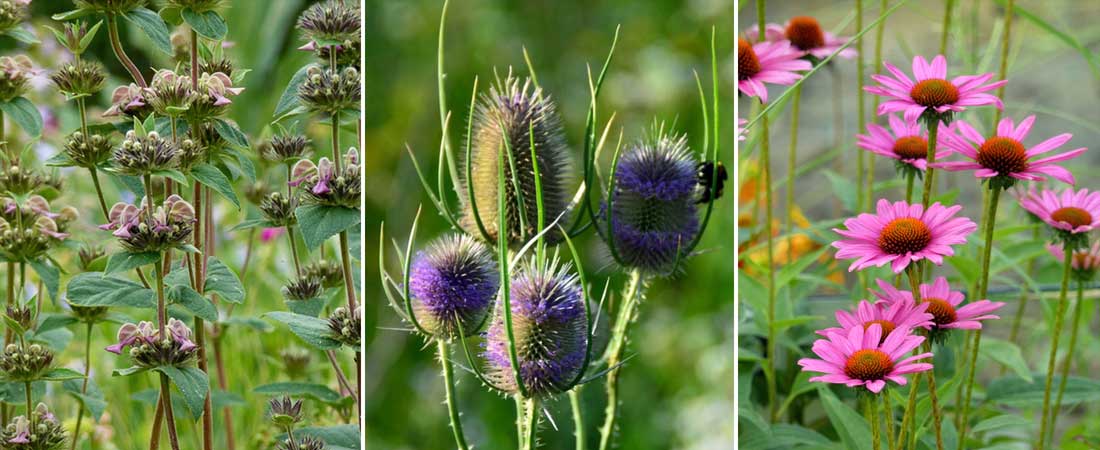
For naturalistic-style garden: Phlomis samia, Dipsacus fullonum (photo Radio Tonreg), and Echinacea purpurea ‘The King’
Useful resources
- Discover our range of Phlomis!
- An article by Pierre on our blog – Mediterranean plants: where do they really come from?
- A selection of plants to pair with Phlomis in a dry garden
- Discover other allelopathic plants!
Frequently asked questions
-
Leaves on my Phlomis have yellow or discoloured spots! What should I do?
These are leafhoppers, small insects that pierce leaves to extract sap, causing them to discolour. Although this weakens plants, damage is fairly limited. To get rid of them, you can use black soap.
- Subscribe!
- Contents
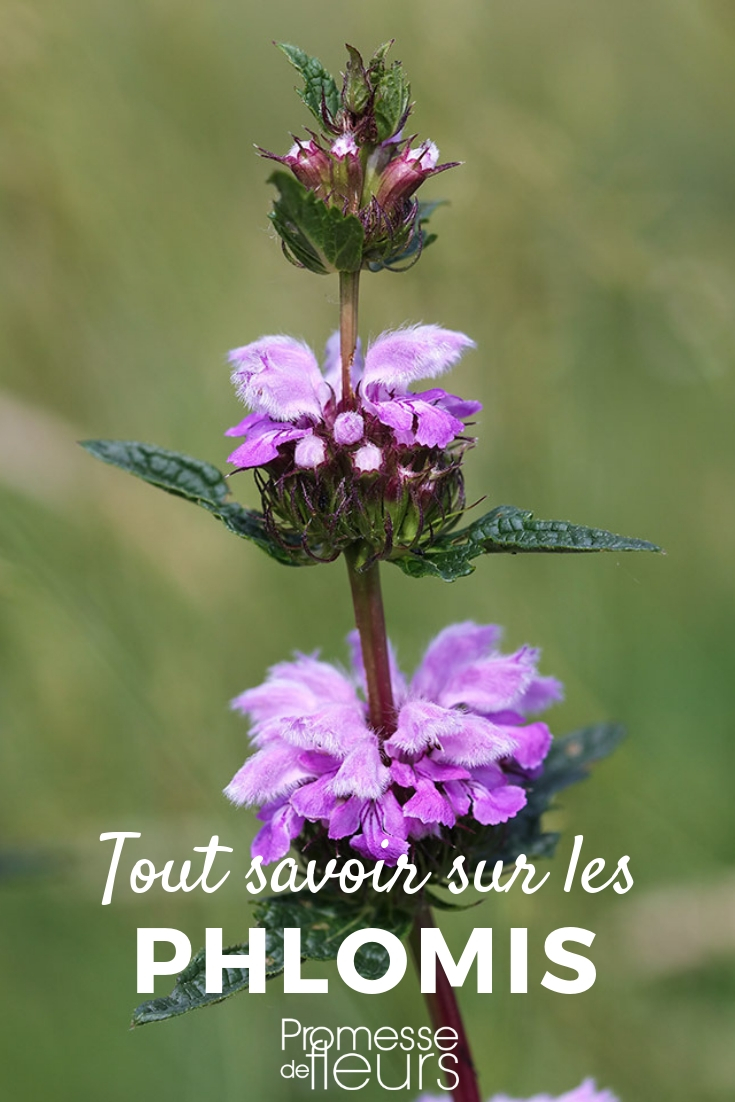


































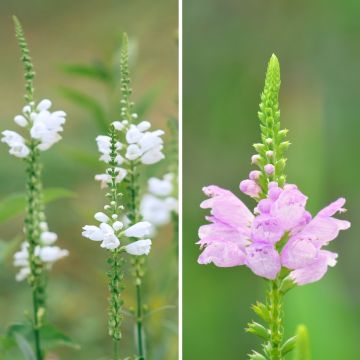
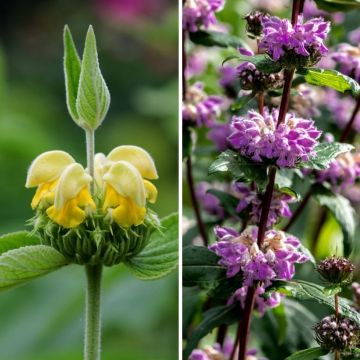



Comments